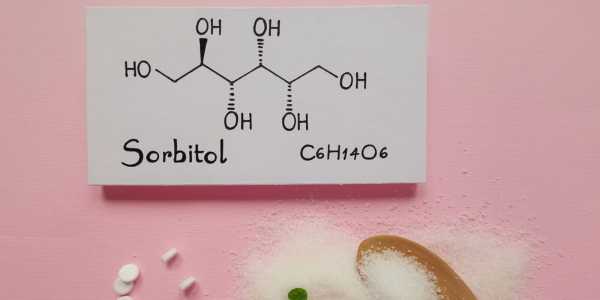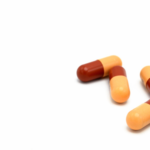
Origins: – Sorbitol is referred to as a sugar alcohol (polyol), a carbohydrate type. It occurs naturally and can be derived from a variety of fruits and berries. The discovery of Sorbitol can be traced to mountain ash berries in 1872. It was isolated successfully and named by Joseph Boussingault. It is widely produced commercially and is recognised as the most common polyol in the US. It consists of lesser calorie content than sugar (one-third more deficient than sugar) and is about 60 per cent as sweet as sugar. [1] The use of Sorbitol is permitted in many countries and is regarded safe in food production by the European Union, Australia, Japan, and Canada. [3]
How it is produced: – Glucose is the most important source of energy needed by the body. Glycogen is a complex molecule formed when many glucose molecules bind together. Glycogen ensures point is available to the body when glucose runs out. [5] The reduction of glucose forms a crucial aspect of producing Sorbitol. It is made by the hydrogenating of glucose. [1] Typical procedures to derive Sorbitol includes the use of corn and hydrogen. Corn serves as the source of starch that is broken down into simple sugar components (glucose). Hydrogen is then added to convert the simple sugar into Sorbitol with the utilisation of a metal catalyst. [4]
How it works: – Upon consumption, Sorbitol is absorbed by the small intestine, albeit at a comparatively slower rate than sugar. After being released into the bloodstream, Sorbitol is metabolised and converted into fructose. Sorbitol is not absorbed completely by the small intestine and is further metabolised when it reaches the colon. [4]

Some of the roles played by Sorbitol can be illustrated in the following manner:
| Role | How it is served |
| As an alternative to sugar
|
Sorbitol is slowly metabolized by the body and generates fewer calories. It is used to reduce calories in whole foods and baked goods, desserts, and sugar-free chewing gum, to name a few. |
| As a laxative
|
Sorbitol is medicinally administered to treat constipation. Laxatives are to be used temporary. Being an osmotic laxative, it helps soften the stool and makes it easy to pass
|
| Use in dental product
|
Being non-cariogenic, it cannot be metabolized by oral bacteria thereby protecting teeth from cavities and tooth enamel erosion. |
| Regulates blood sugar levels
|
The glycemic index indicates how much a person’s blood sugar will rise if they eat one gram of a certain carbohydrate. All carbohydrates are compared to pure glucose which has a glycemic index value of 100. For example, let us take the case of ice cream which has a glycemic index value of 68. The glycemic index of 68 means when you ate 100 grams of ice cream, your blood sugar would rise about 68% as much as when you eat 100 grams of pure glucose. [5] Sorbitol has a lower glycemic index of 9 as compared to sucrose which possesses a glycemic index of 65. [4]
|
[2, 4, 5]
Side Effects: – The extensive use of Sorbitol may contribute to the onset of nausea, gas, diarrhoea and stomach cramps. It is advised to notify your doctor if any of the listed effects persist or worsen. Under the directed use of a laxative provided by a medical professional, serious side effects are not expected. It is advised to inform your doctor immediately in the vent of severe side effects such as vomiting, weakness, dizziness, or rectal bleeding. Allergic reactions are unusual but must be addressed with medical guidance. These include rash, itching, dizziness, breathing trouble or swelling. [2]

Shubham Pharmachem – A global pioneer
Shubham Pharmachem is a leading player in the Indian pharmaceutical industry for its manufacturing and distribution of Active Pharmaceutical Ingredients (API), herbal extracts, nutraceutical ingredients, cosmetic ingredients, and other life-saving medicines.
With over three decades of excellence, our R&D focuses on the prevention, treatment, and alleviation of diseases. Our innovative, high-quality, yet affordable medicines help improve the lives of millions of patients across the world.
For more details, visit www.shubham.co.in
Disclaimer:
Shubham Pharmachem’s blog posts have been written with the information gathered from approved medical journals and websites online. Our research and technical team strive to provide relevant information through such articles. We strongly advise readers to not consume or administer any medication without prior consultation with their doctor.
References




